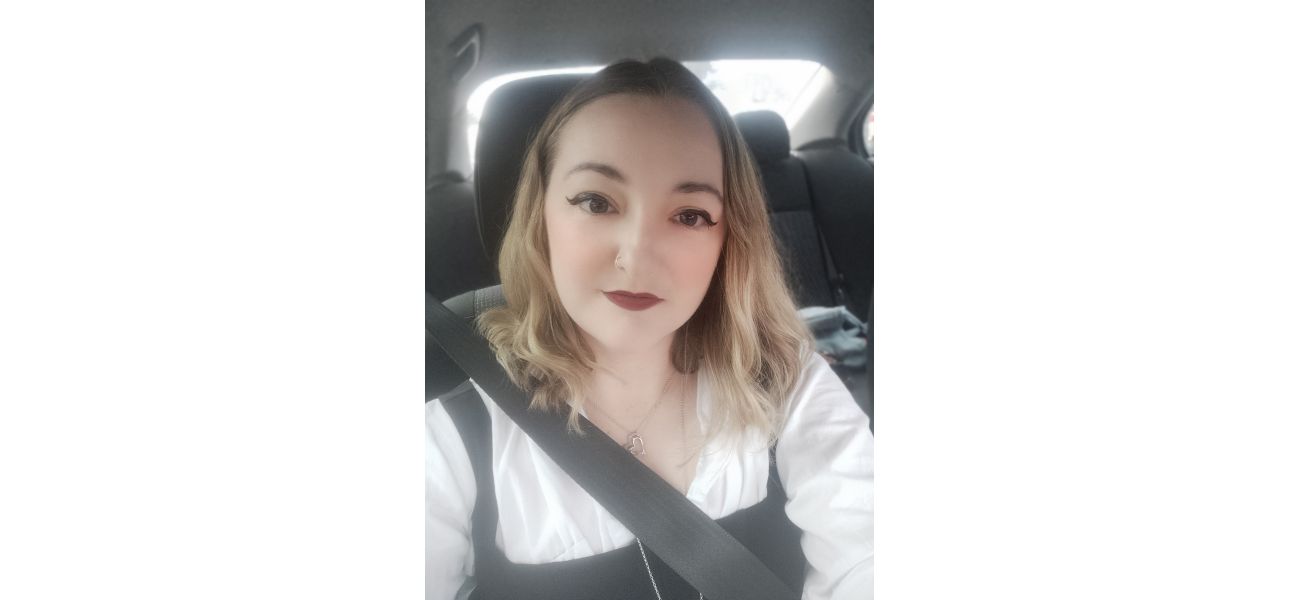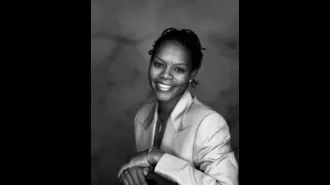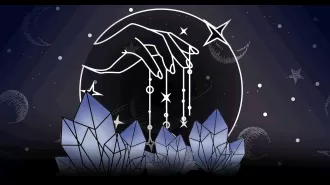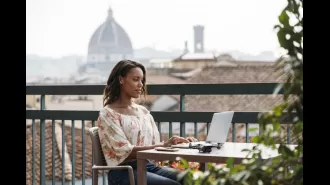Cheryll and other women are important in causing Australia's declining birth rate.
She spent $20k on IVF but ended up with no children, abandoning her dream of motherhood.
October 24th 2024.

The birth rate in Australia has dropped to a concerning low, as more and more women are choosing to delay or completely forgo motherhood. Recent data from the Australian Bureau of Statistics shows that the current birth rate is at 1.5 births per woman, with many women deciding to remain childfree for personal reasons such as financial pressures and concerns about sustainability.
One such woman is Cheryll, who is 35 years old and had to give up her dream of becoming a mother after spending a significant amount of money, around $20,000, on fertility treatments with no success. Cheryll, who is from Queensland, started undergoing IVF in 2022 after experiencing a dangerous ectopic pregnancy. However, due to the high cost of treatments, she and her partner could only afford a limited number of attempts.
"We saved every penny we had and put it towards the infertility treatments," Cheryll shared with 9news. "But after our last embryo transfer, we just hit an emotional wall and couldn't continue. The cost of living also played a role in our decision, as we had already spent so much."
According to IVF Australia, the out-of-pocket cost for one cycle of IVF in 2024 can be more than $11,500. The cost for Intracytoplasmic Sperm Injection, another type of fertility treatment, can exceed $12,500, while a frozen embryo transfer can cost around $4,200. These high costs, coupled with the rising cost of living, have made it difficult for many couples to afford having children.
Last year, Cheryll and her partner made the tough decision to stop IVF treatments and not have children, as they couldn't afford it and provide a comfortable life for their child. They both work full time and have a long commute, and they can't afford to move closer to work. To make matters worse, their rent was recently increased by $75 a week.
"Childcare is very expensive, and then there's the cost of raising another mouth to feed. It would be too much for us," Cheryll explained. "With the rising costs and stagnant wages, we would be in trouble if we had a child. Another rent increase could leave us homeless, and we'd end up in our local tent city."
Cheryll and her partner don't want to bring a child into poverty, so instead, they are using the money they would have spent on children to travel. This is a common trend among women like Cheryll, who are contributing to the declining fertility rate in Australia. In 2023, the birth rate dropped to 286,998, the lowest it has been since 2006.
Treasurer Jim Chalmers, a father of three, has acknowledged the long-term trend of declining birth rates and the role that affordability plays in this challenge. However, it's not the only reason women are choosing not to have children. Laura, a 39-year-old woman from Victoria, said she never felt the urge to become a mother and didn't want to pass on any trauma to future generations.
"The other part of my decision to be childfree is psychological. I don't want to pass on any of my childhood issues to my own child," Laura shared with 9news. "My parents did the best they could, but I'm still spending a lot of time trying to resolve my own childhood trauma."
Laura's decision not to have children has also made dating less stressful for her, as she doesn't have to find a partner who would be a good father. She also doesn't have to worry about the impact motherhood could have on her career.
Despite feeling comfortable with their decisions, both Cheryll and Laura have faced criticism for choosing not to have children. "There's a lot of stigma associated with childless women. We're often seen as defective, lonely, or pathetic. People assume we are resentful or jealous," Cheryll stated. Laura shared that in the US, Vice Presidential candidate J.D. Vance recently referred to prominent Democrats as "childless cat ladies" who don't have a stake in the nation's future.
Both women believe that there is too much pressure on Australian women to become mothers for various reasons, but this pressure is unlikely to change if the birth rate continues to decline. The current rate is well below the 2.1 births per woman needed to maintain a natural population balance without considering immigration. This may lead to calls for Australian couples to have more children, similar to a plea made in 2004 by then-Treasurer Peter Costello for parents to "have one for mum, one for dad, and one for the country."
Stay updated on the latest breaking news, celebrity updates, and sports news by following our WhatsApp channel. No comments, no algorithm, and your privacy is protected.
One such woman is Cheryll, who is 35 years old and had to give up her dream of becoming a mother after spending a significant amount of money, around $20,000, on fertility treatments with no success. Cheryll, who is from Queensland, started undergoing IVF in 2022 after experiencing a dangerous ectopic pregnancy. However, due to the high cost of treatments, she and her partner could only afford a limited number of attempts.
"We saved every penny we had and put it towards the infertility treatments," Cheryll shared with 9news. "But after our last embryo transfer, we just hit an emotional wall and couldn't continue. The cost of living also played a role in our decision, as we had already spent so much."
According to IVF Australia, the out-of-pocket cost for one cycle of IVF in 2024 can be more than $11,500. The cost for Intracytoplasmic Sperm Injection, another type of fertility treatment, can exceed $12,500, while a frozen embryo transfer can cost around $4,200. These high costs, coupled with the rising cost of living, have made it difficult for many couples to afford having children.
Last year, Cheryll and her partner made the tough decision to stop IVF treatments and not have children, as they couldn't afford it and provide a comfortable life for their child. They both work full time and have a long commute, and they can't afford to move closer to work. To make matters worse, their rent was recently increased by $75 a week.
"Childcare is very expensive, and then there's the cost of raising another mouth to feed. It would be too much for us," Cheryll explained. "With the rising costs and stagnant wages, we would be in trouble if we had a child. Another rent increase could leave us homeless, and we'd end up in our local tent city."
Cheryll and her partner don't want to bring a child into poverty, so instead, they are using the money they would have spent on children to travel. This is a common trend among women like Cheryll, who are contributing to the declining fertility rate in Australia. In 2023, the birth rate dropped to 286,998, the lowest it has been since 2006.
Treasurer Jim Chalmers, a father of three, has acknowledged the long-term trend of declining birth rates and the role that affordability plays in this challenge. However, it's not the only reason women are choosing not to have children. Laura, a 39-year-old woman from Victoria, said she never felt the urge to become a mother and didn't want to pass on any trauma to future generations.
"The other part of my decision to be childfree is psychological. I don't want to pass on any of my childhood issues to my own child," Laura shared with 9news. "My parents did the best they could, but I'm still spending a lot of time trying to resolve my own childhood trauma."
Laura's decision not to have children has also made dating less stressful for her, as she doesn't have to find a partner who would be a good father. She also doesn't have to worry about the impact motherhood could have on her career.
Despite feeling comfortable with their decisions, both Cheryll and Laura have faced criticism for choosing not to have children. "There's a lot of stigma associated with childless women. We're often seen as defective, lonely, or pathetic. People assume we are resentful or jealous," Cheryll stated. Laura shared that in the US, Vice Presidential candidate J.D. Vance recently referred to prominent Democrats as "childless cat ladies" who don't have a stake in the nation's future.
Both women believe that there is too much pressure on Australian women to become mothers for various reasons, but this pressure is unlikely to change if the birth rate continues to decline. The current rate is well below the 2.1 births per woman needed to maintain a natural population balance without considering immigration. This may lead to calls for Australian couples to have more children, similar to a plea made in 2004 by then-Treasurer Peter Costello for parents to "have one for mum, one for dad, and one for the country."
Stay updated on the latest breaking news, celebrity updates, and sports news by following our WhatsApp channel. No comments, no algorithm, and your privacy is protected.
[This article has been trending online recently and has been generated with AI. Your feed is customized.]
[Generative AI is experimental.]
0
0
Submit Comment





